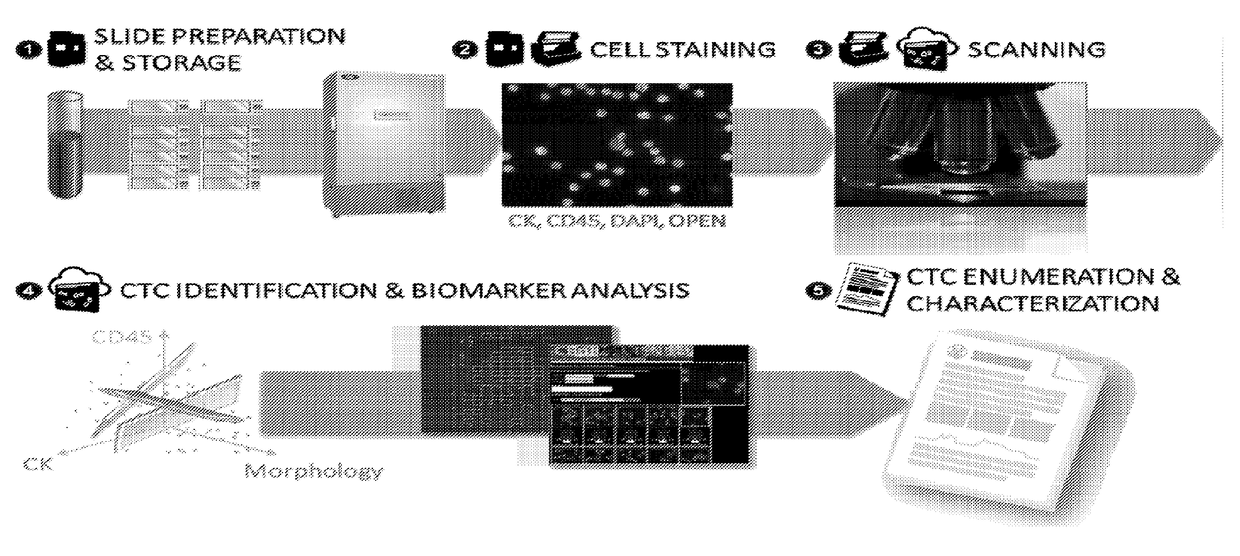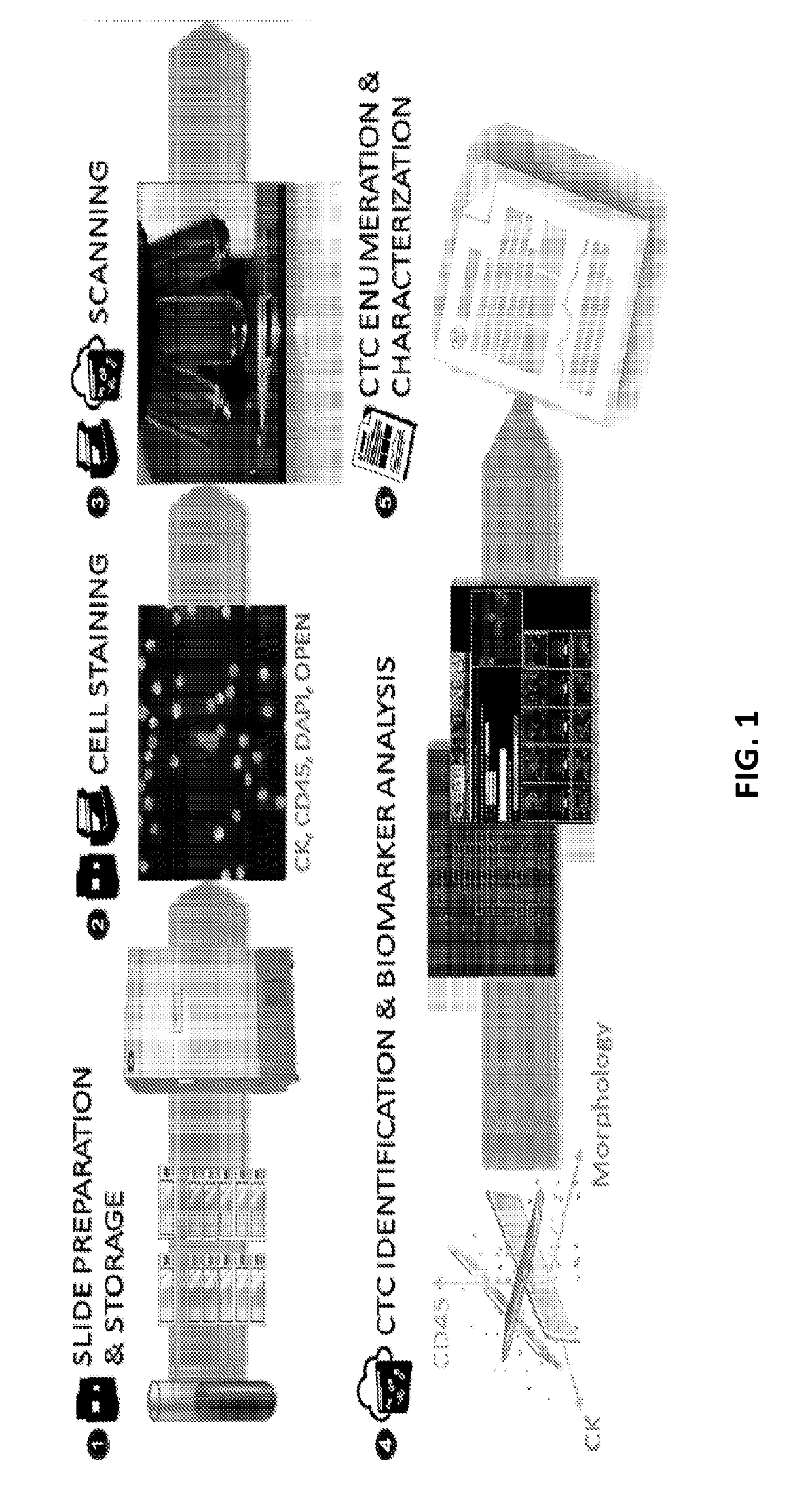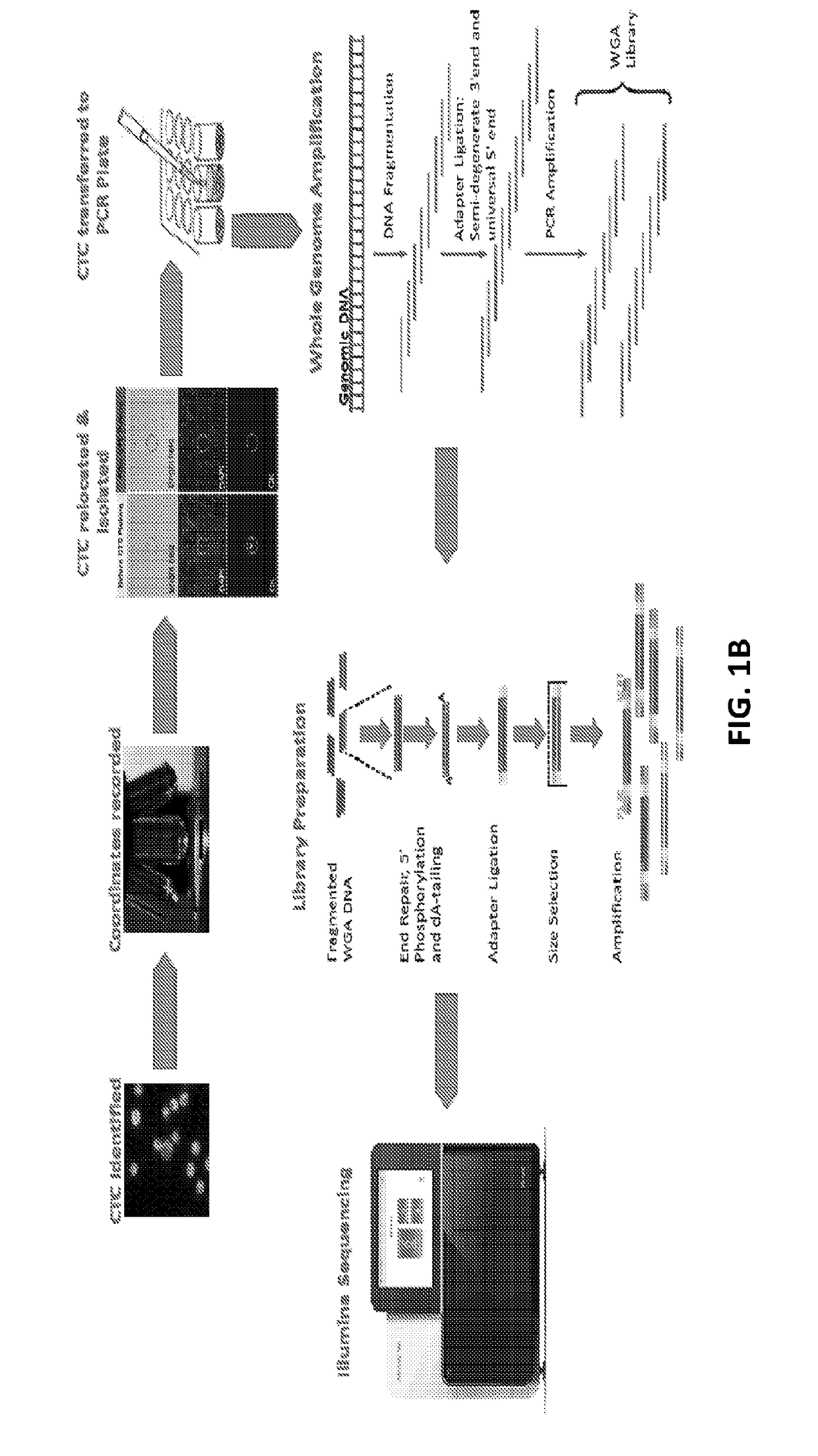Single cell genomic profiling of circulating tumor cells (CTCS) in metastatic disease to characterize disease heterogeneity
a single cell genomic and metastatic disease technology, applied in the field of single cell genomic profiling of circulating tumor cells in metastatic disease to characterize disease heterogeneity, can solve the problems of no treatment proven to improve the survival rate of mcrpc men, no benefit in terms of overall survival,
- Summary
- Abstract
- Description
- Claims
- Application Information
AI Technical Summary
Benefits of technology
Problems solved by technology
Method used
Image
Examples
example 1
[0088]Sample evaluation for CTCs was performed as reported previously using the Epic Sciences Platform. Marrinucci et al. Phys Biol 9:016003, 2012. The Epic CTC collection and detection process, which flows as follows: (1) Blood lysed, nucleated cells from blood sample placed onto slides; (2) Slides stored in −80 C biorepository; (3) Slides stained with CK, CD45, DAPI and AR; (4) Slides scanned; (5) Multi-parametric digital pathology algorithms run, and (6) Software and human reader confirmation of CTCs & quantitation of biomarker expression. During the subsequent CTC recovery and genomic profiling workflow, individual cells were isolated, subjected to Whole Genome Amplification, and NGS library preparation. Sequencing was performed on an Illumina NextSeq 500.
[0089]Blood samples underwent hemolysis, centrifugation, re-suspension and plating onto slides, followed by −80° C. storage. Prior to analysis, slides were thawed, labeled by immunofluorescence (pan cytokeratin, CD45, DAPI) and...
PUM
| Property | Measurement | Unit |
|---|---|---|
| Refractory | aaaaa | aaaaa |
| Cell growth | aaaaa | aaaaa |
Abstract
Description
Claims
Application Information
 Login to View More
Login to View More - R&D
- Intellectual Property
- Life Sciences
- Materials
- Tech Scout
- Unparalleled Data Quality
- Higher Quality Content
- 60% Fewer Hallucinations
Browse by: Latest US Patents, China's latest patents, Technical Efficacy Thesaurus, Application Domain, Technology Topic, Popular Technical Reports.
© 2025 PatSnap. All rights reserved.Legal|Privacy policy|Modern Slavery Act Transparency Statement|Sitemap|About US| Contact US: help@patsnap.com



